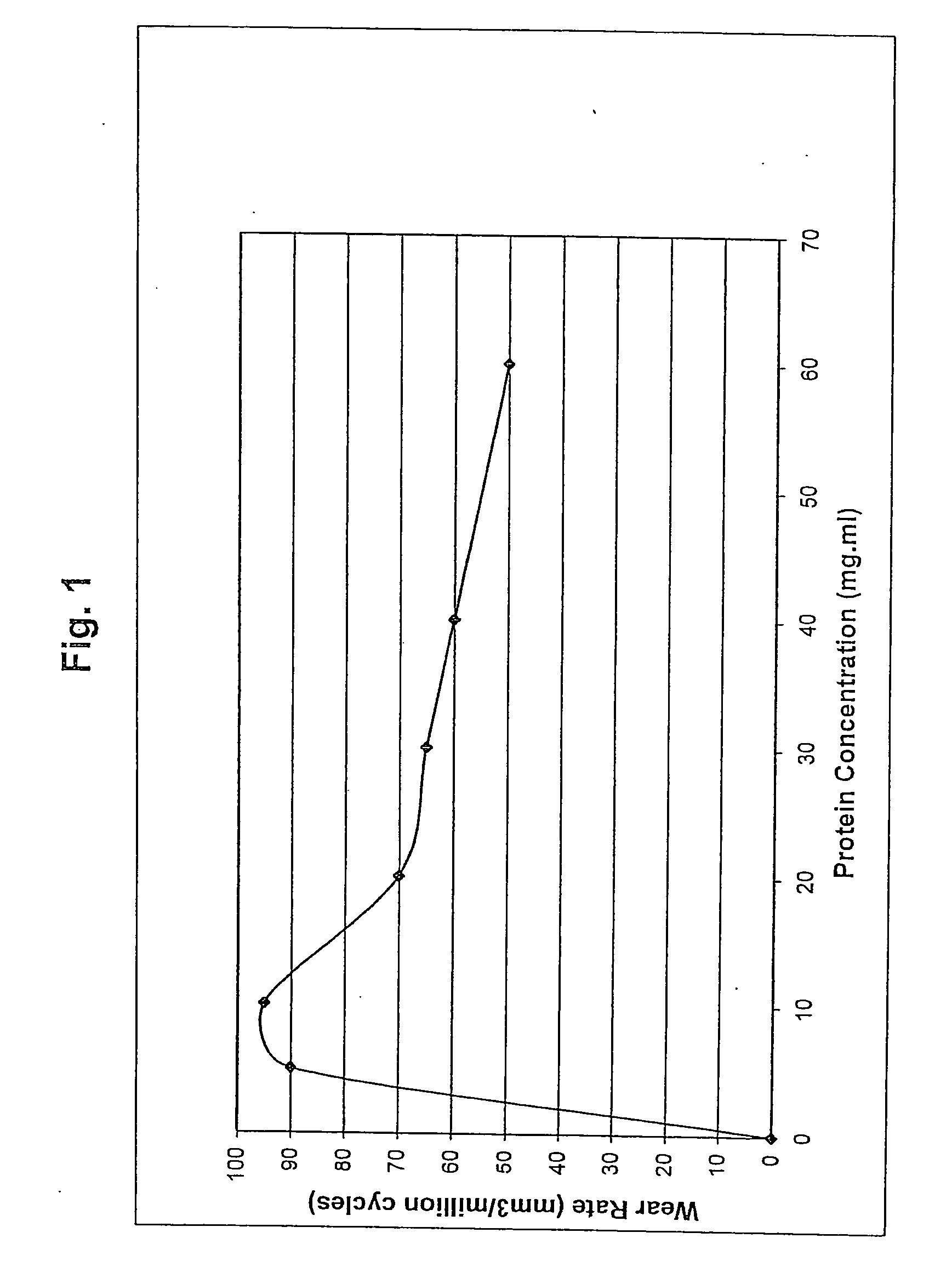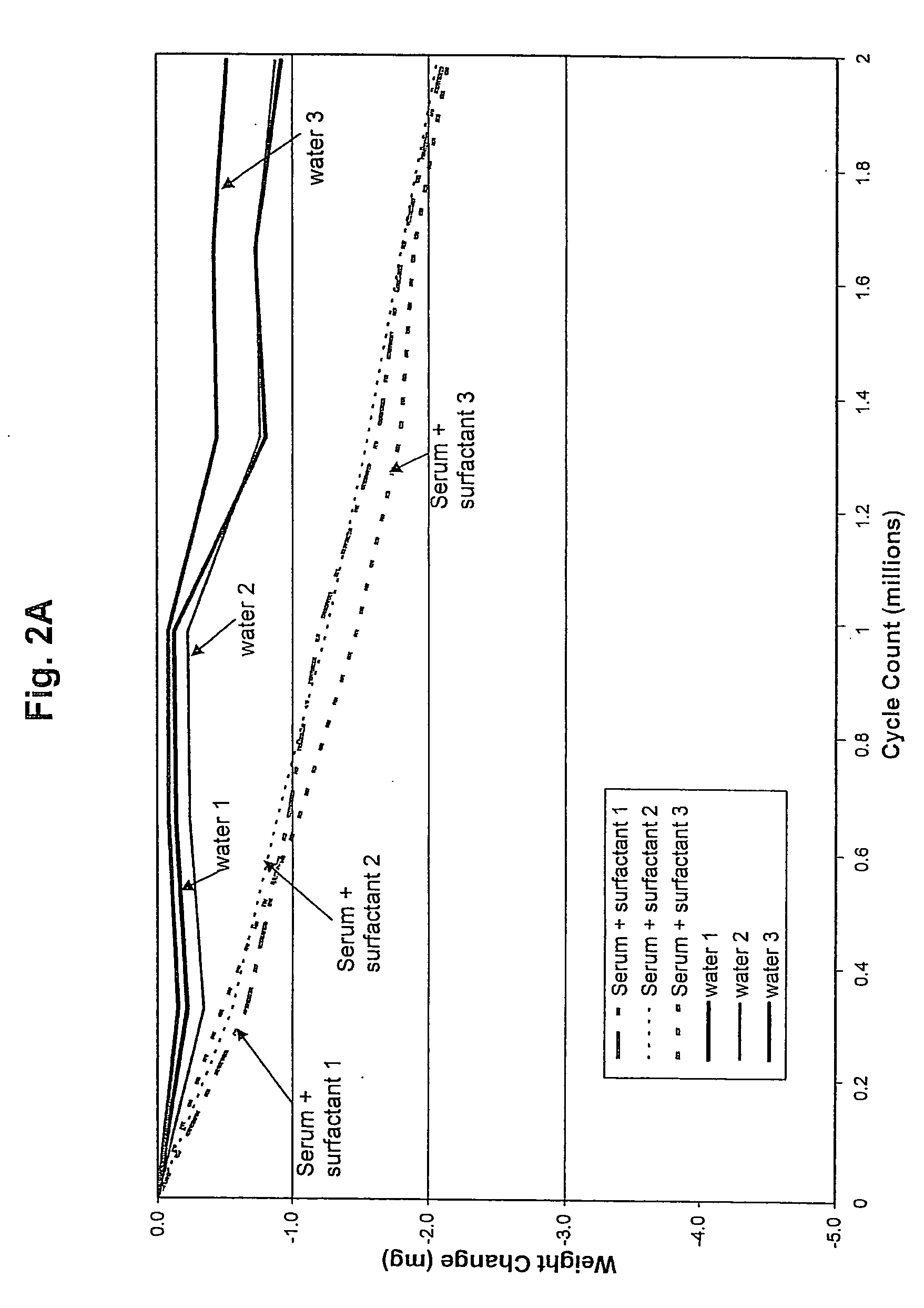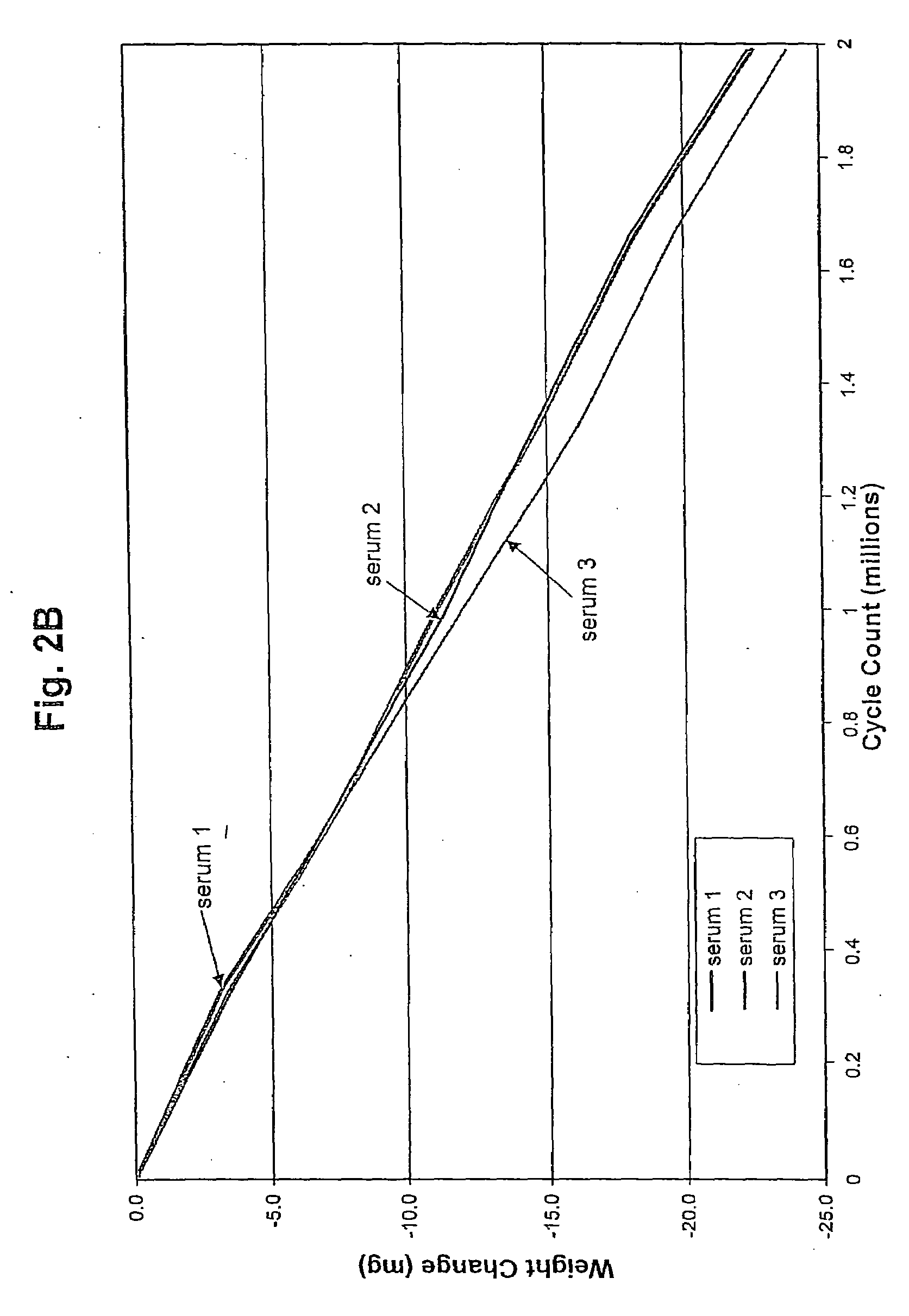Bearing material of medical implant having reduced wear rate and method for reducing wear rate
a technology of wear rate and wear rate, applied in the field of wear rate reduction and wear rate reduction of medical implants, can solve the problems of adverse reactions, inflammation and deterioration of cell tissues, polymer materials tend to wear, etc., and achieve the effects of reducing osteolytic potential, reducing wear rate, and reducing the amount of wear debris production
- Summary
- Abstract
- Description
- Claims
- Application Information
AI Technical Summary
Benefits of technology
Problems solved by technology
Method used
Image
Examples
example 1
[0031]This example illustrates an advantage of the surface active agent in accordance with an embodiment of the invention, namely, it reduces the wear rate of UHMWPE.
[0032]UHMWPE pins, 0.7 inch long and 0.375 inch diameter, are manufactured from GUR 1020 resin ram extruded into bar stock. The pins are sterilized by irradiation. Metal counterfaces, 1.5 inch diameter and 0.5 inch thick, are fabricated from cast 68% cobalt, 26% chromium, 6% molybdenum, and 0.2% carbon. The counterfaces are hot isostatic pressed and homogenized by heat treatment and polished to an average surface roughness of between 10 and 20 nm. Three disks are obtained for each wear test group. A sample pairing chart including same identifications is shown in Table 1.
TABLE 1Sample Pairing and Identification.Sample GroupPinDiskStationSerum and surfaceS12B1active agentS25B2S363WaterW174W285W396Serum443454456456
[0033]The wear tests are conducted on a Pin-on-Disk (POD) machine (AMTI (Watertown, Mass.) OrthoPOD™). The pin...
example 2
[0037]This example illustrates an advantage of an embodiment of the present invention, namely, the coefficient of friction between the polymer surface and the hard counterface is reduced.
[0038]Friction data is collected on the same type of pins and disks illustrated in Example 1. The data are obtained on an AMTI OrthoPOD™ Pin-on-Disk tester equipped with multiaxis strain gauges. The coefficient of friction is calculated by dividing the normal force by the in plane force during the same 10 mm by 10 mm test pattern and Paul load cycle used in wear testing. The friction data is collected over a small portion of the test pattern between the peaks of the Paul loading curve. FIG. 3 depicts the reduction in the coefficient of friction brought about by the use of the surfactant. Each point in FIG. 3 is the average of approximately 30 data points.
example 3
[0039]This example illustrates a method of incorporating a non-ionic surface active agent into the UHMWPE.
[0040]UHMWPE is fabricated with one or both of two ethoxylated fatty alcohols having the nominal formulas C38(EO)11 and C38(EO)103. The ethoxylated fatty alcohols are available from Baker Petrolite (Sugarland, Tex.) in neat form (as Unithox® 450 with an HLB value of 10 and Unithox® 490 with an HLB value of 18, respectively) or as aqueous dispersions (Unithox® D100 and Petrolite® D1038, respectively). The procedure begins by preparing an aqueous dispersion of UHMWPE GUR 1020 grade powder with the D100 and / or D1038 ethoxylate at a level of 1% by weight of the UHMWPE material. Once the dispersion is prepared, it is poured into at least one suitable tray and frozen at −80° C. The tray is then loaded into a freeze dryer and a vacuum is pulled on the frozen dispersion. The water is removed by sublimation, leaving a uniform dispersion of ethoxylate and UHMWPE powder. This powder is the...
PUM
| Property | Measurement | Unit |
|---|---|---|
| weight average molecular weight | aaaaa | aaaaa |
| molecular weight | aaaaa | aaaaa |
| molecular weight | aaaaa | aaaaa |
Abstract
Description
Claims
Application Information
 Login to View More
Login to View More - R&D
- Intellectual Property
- Life Sciences
- Materials
- Tech Scout
- Unparalleled Data Quality
- Higher Quality Content
- 60% Fewer Hallucinations
Browse by: Latest US Patents, China's latest patents, Technical Efficacy Thesaurus, Application Domain, Technology Topic, Popular Technical Reports.
© 2025 PatSnap. All rights reserved.Legal|Privacy policy|Modern Slavery Act Transparency Statement|Sitemap|About US| Contact US: help@patsnap.com



